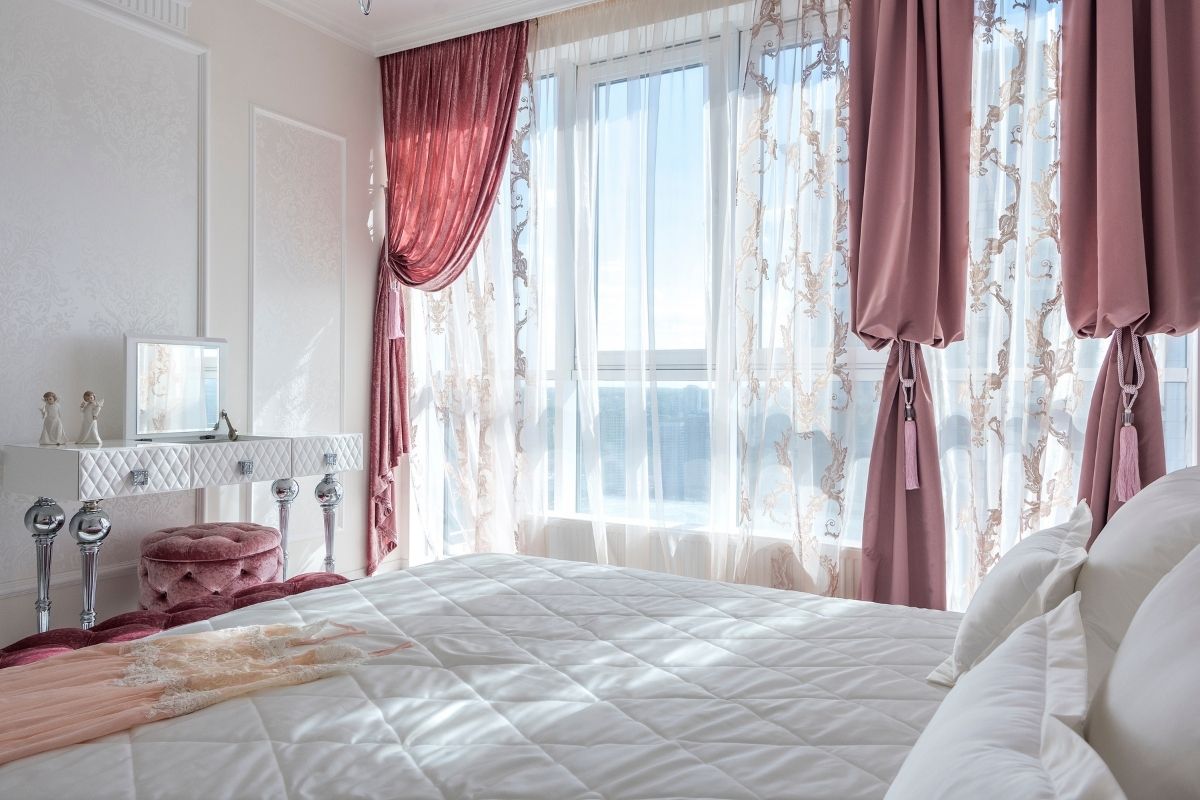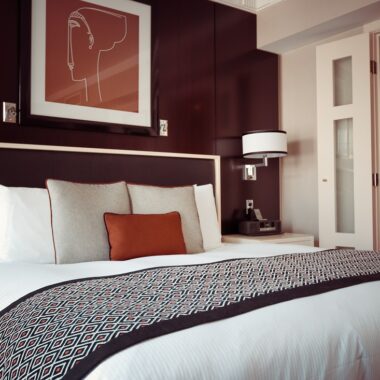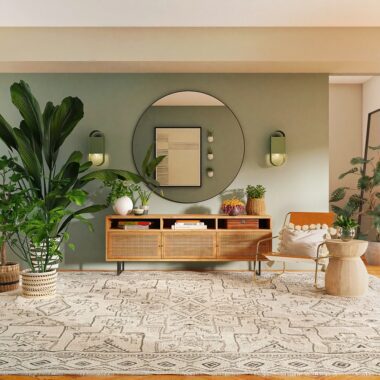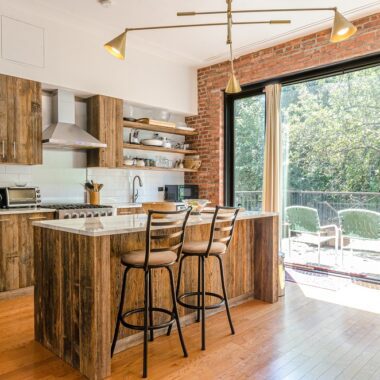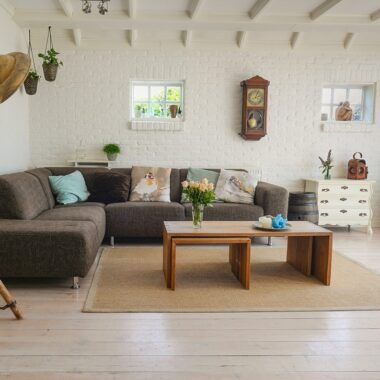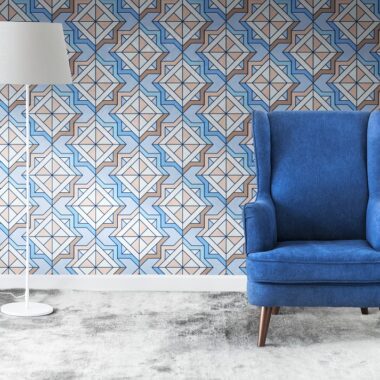Curtains are a tough choice. There are so many things to focus on, like the size, space, colour, patterns, and material. If done the right way, curtains can change the whole appearance of the room. The living room by itself stands out completely different from the rest of the house. It calls for attention and careful planning. But don’t worry, the best interior designers in Pune, Basil Homes, have you covered.
Before we get to the curtains, we need to consider certain aspects of the living room that will help us pick the perfect set. These are:
A) The Size of the Room:
The curtains need to go along with the size of the room. Owners of small spaces would like a living room that is spacious and breathy. The way to go about this is using long ceiling-to-floor curtains and hanging them high. This makes the eye run across the entire length of the curtain and makes the room seem big. Avoid heavily coloured or bold patterned curtains because they will dominate the room and give a feeling of less space. Sheer or light-coloured curtains are a better option.
Large living rooms can incorporate dark coloured curtains to make the room appear sophisticated and elegant. Puddle curtains are excellent to create a dramatic effect.
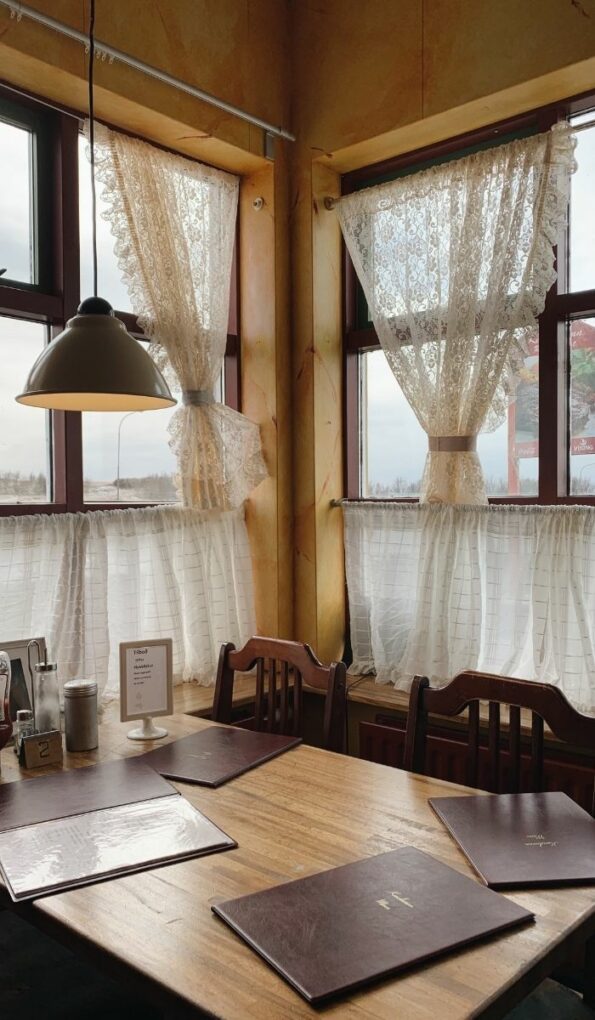
B) Dimension of the Windows:
To make an impact, you need fuller curtains. But curtains that don’t cover the window or fit just right are not the look we’re aiming for. Multiply the length of the window by 1.5 or 3, and there, you have the desired curtain length. Pleated curtains need to be wider than normal ones because they fold in.
For the length, choose curtains based on the size of the window. French windows need door style curtains, whereas horizontal slider windows can work with any length of curtains. If it’s a window you often open, use sill curtains.
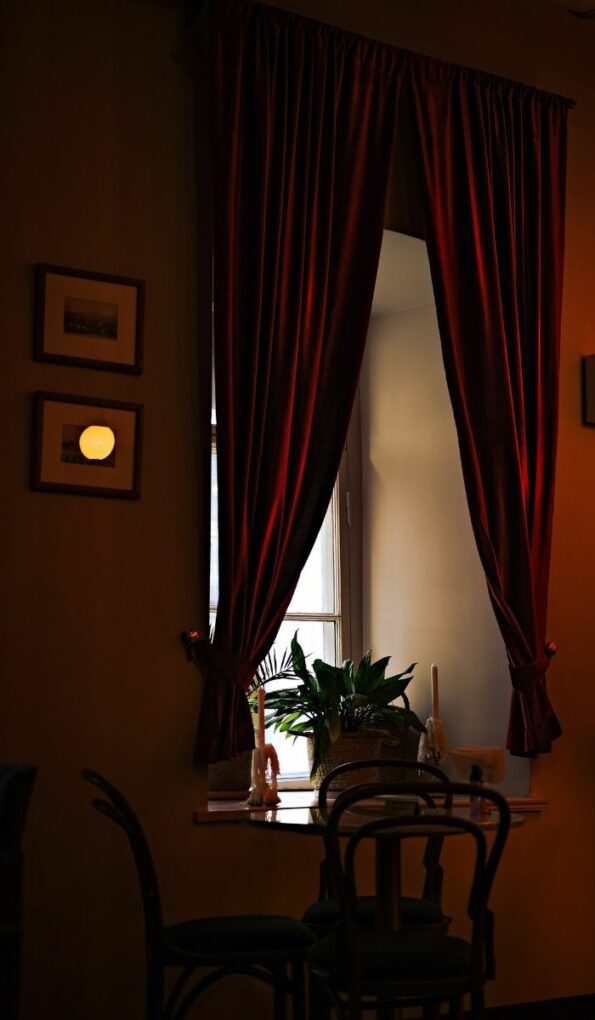
C) Light:
The opacity of the curtain is determined by how much light you want to let in. For a bright living room, sheer or semi-opaque curtains will bring light even when they’re drawn. Semi-opaque curtains offer more privacy than sheer curtains.
Blackout curtains let in the least amount of light. They are made of heavy materials that provide additional advantages such as insulation and noise reduction.
Using a combination of sheer/semi-opaque and blackout curtains on a double curtain rod (one curtain behind the other) gives you control over the amount of light that ushers in.
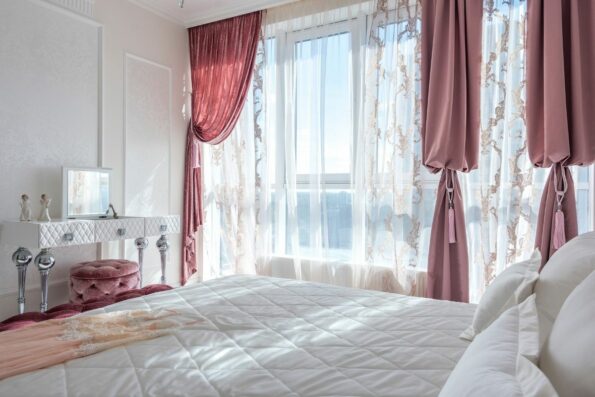
D) Other Items in the Living Room:
Your curtains should complement not only the theme but also the placement and functionality of the furniture and other décor placed in your living room. If your sofa sits right below the window, opting for window length curtains will work in your favour.
If you want to highlight other parts of your living room, say a painting or a fancy sofa set, choose curtains that softly blend into the background.

E) The Choice of Fabric:
The material plays a crucial role within the design of the curtains and consequently, the room. From delicate lacework to air light cotton to rich brocades and hefty velvets, you have multiple options to choose from. However fabric selection should revolve around two main factors-
- The amount of Sunlight you want to stream into your room.
- The mood you want to create in the room. Heavier velvets boast a traditional look whereas lighter fabrics give a minimalistic vibe.
Each curtain falls uniquely from the top and hence will appear different when pleated and drawn back together.
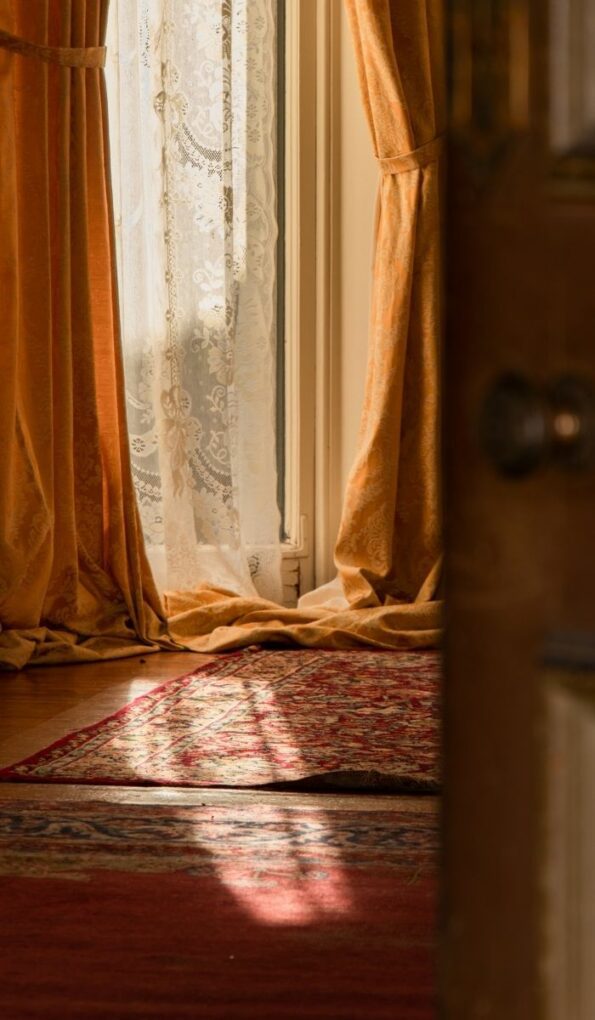
F) Deciding between lined and unlined variants:
Here’s where you weigh the functionality of the curtains or drapes that you simply have chosen. If the curtains fall on a window where sunlight hits directly, a protective lining can make it more opaque and protect the outer layer from fading too soon. Also, two layers – one sheer, one opaque can offer you the pliability to settle on the quantity of privacy and lightweight you would like. The very fact remains that a lining makes drapes heavier — so choose wisely.
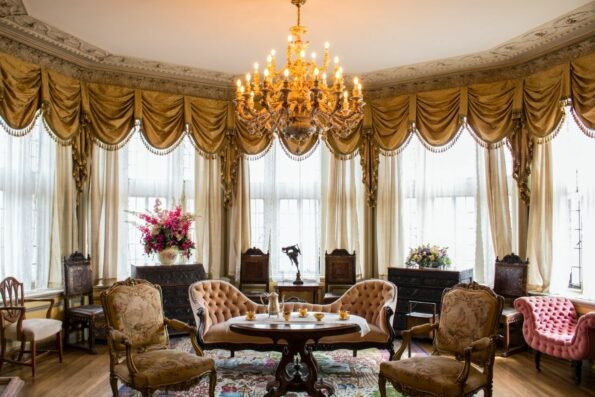
G) Accessorize your Curtains and add Trims:
Curtain Accessories keep the curtains in shape, permitting sunlight to filter through the windows efficiently. Curtain trims and tassels add tasteful intricacy to your drapes which make all the difference and mould an artistic look. Ribbons and tapes, tassels, pom-poms and geometric patterns don’t just augment your room, they add depth and flavourful taste to your window treatments. These accessories are often cleverly accompanied with light drapes to feature richness and grandeur. Valance, the ornamental frilled fabric placed at the highest part of the window, is a superb embellishment to your room.
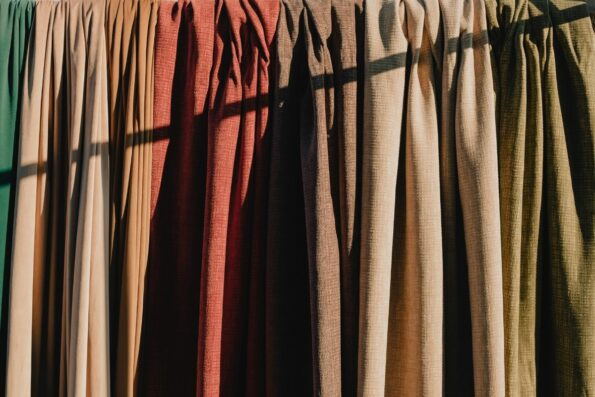
H) Select fabrics based on the maintenance required:
The fabric and material influence the cleaning frequency and maintenance of your curtains.
While your curtains and drapes require a wash every three-six months, there are quite some fabrics that require greater care and a handful need machine washing.
Low maintenance fabrics: If you’re trying to find curtains that demand washing twice a year choose cotton or synthetic fabrics. These fabrics should be machine washed if they’re unlined, alternatively, give your lined curtains a fast hand wash.
High maintenance fabrics: Any curtain that has pleats or swags must be dry cleaned no matter the material. Silk, sheer and woolen fabrics must be hand washed in cold water which enable them to retain colour and shape.
If you have dust allergic people at home, please vacuum them on a weekly basis to avoid discomfort. Hope this article will enable you to make confident decisions on styling your home with the curtain of your taste and style.
Do you have ideas or suggestions of your own? Please feel free to leave them down below!


